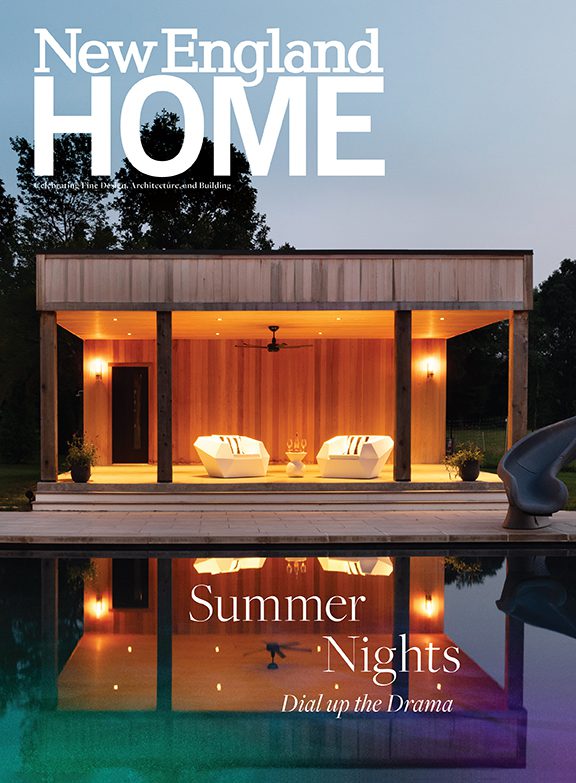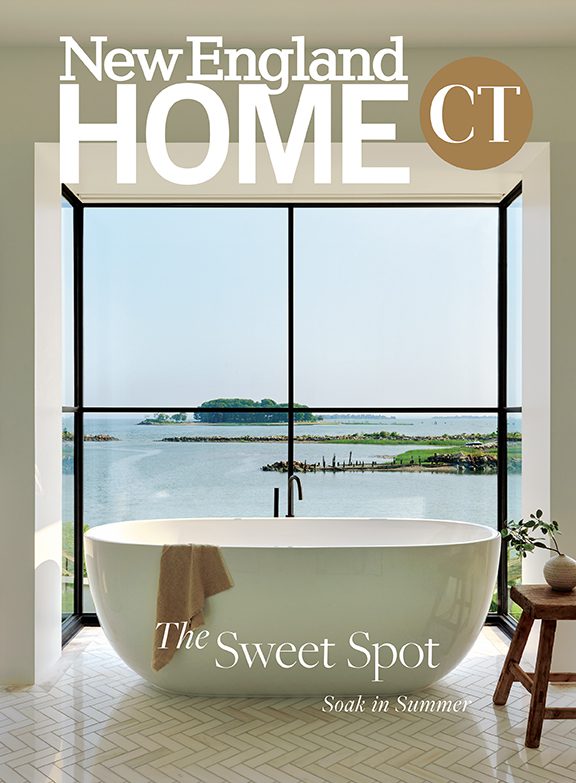Roseland Cottage, Woodstock, Connecticut
May 23, 2013
Text by Regina Cole Photography by courtesy of Historic New England
If Henry Bowen had a carriage accident in New York, you read about it in the Los Angeles Times. Born into modest circumstances in Woodstock, Connecticut, in 1813, he became one of the celebrity one-percenters of his day: a businessman, publisher, insurance company founder and kingmaker whose life personified the social, business, political and religious elements of the American mid-nineteenth century. Roseland Cottage, the summer home he built in 1846 directly across the town common from his birthplace, tells us of his ambition, his sphere of influence and his dedication to matters of style.
The 6,000-square-foot house features the hallmarks of the Gothic Revival architectural style so fashionable at the time, including board-and-batten sheathing, an oriel window, quatrefoil trim and gingerbread vergeboards. Roseland Cottage represented the gospel of picturesque country houses as espoused by tastemaker Andrew Jackson Downing, who declared that the Gothic Revival’s soaring, asymmetrical style suited a dynamic personality. To draw maximum attention to his family’s country retreat, Bowen painted it pink.
“Reviving Gothic architecture was also a religious impulse,” says Laurie Masciandaro, site manager of Roseland Cottage, now a museum operated by Historic New England. “Henry Bowen promoted New England culture and values throughout the country with his newspaper, The Independent. Those values included the Congregational Church, temperance and the abolitionist movement.”
Four presidents visited Roseland Cottage, but the house was, first and foremost, a paradise for Henry and Lucy Bowen’s ten children. (After Lucy’s death, Bowen fathered another child with the second Mrs. Bowen.) Far from their Brooklyn Heights mansion, the children enjoyed what their father considered healthy fresh-air pursuits. For indoor fun, he installed a bowling alley that still sits in the carriage barn.
Roseland Cottage has changed little over the years. Its expansive boxwood parterre garden was first planted in 1850, and much of the original furniture still fills the rooms, including the charming Gothic Revival crib used by generations of Bowens.
Thanks to the happy fact that the Bowen children and grandchildren made no major changes to the house and grounds, we now have an unparalleled glimpse into nineteenth-century upper-class New England family life. •
Editor’s Note: Roseland Cottage, a National Historic Landmark, is open June 1–October 15, 11 a.m.–5 p.m. 556 Route 169, Woodstock, Connecticut, (860) 928-4074
Share
![NEH-Logo_Black[1] NEH-Logo_Black[1]](https://b2915716.smushcdn.com/2915716/wp-content/uploads/2022/08/NEH-Logo_Black1-300x162.jpg?lossy=1&strip=1&webp=1)


















You must be logged in to post a comment.